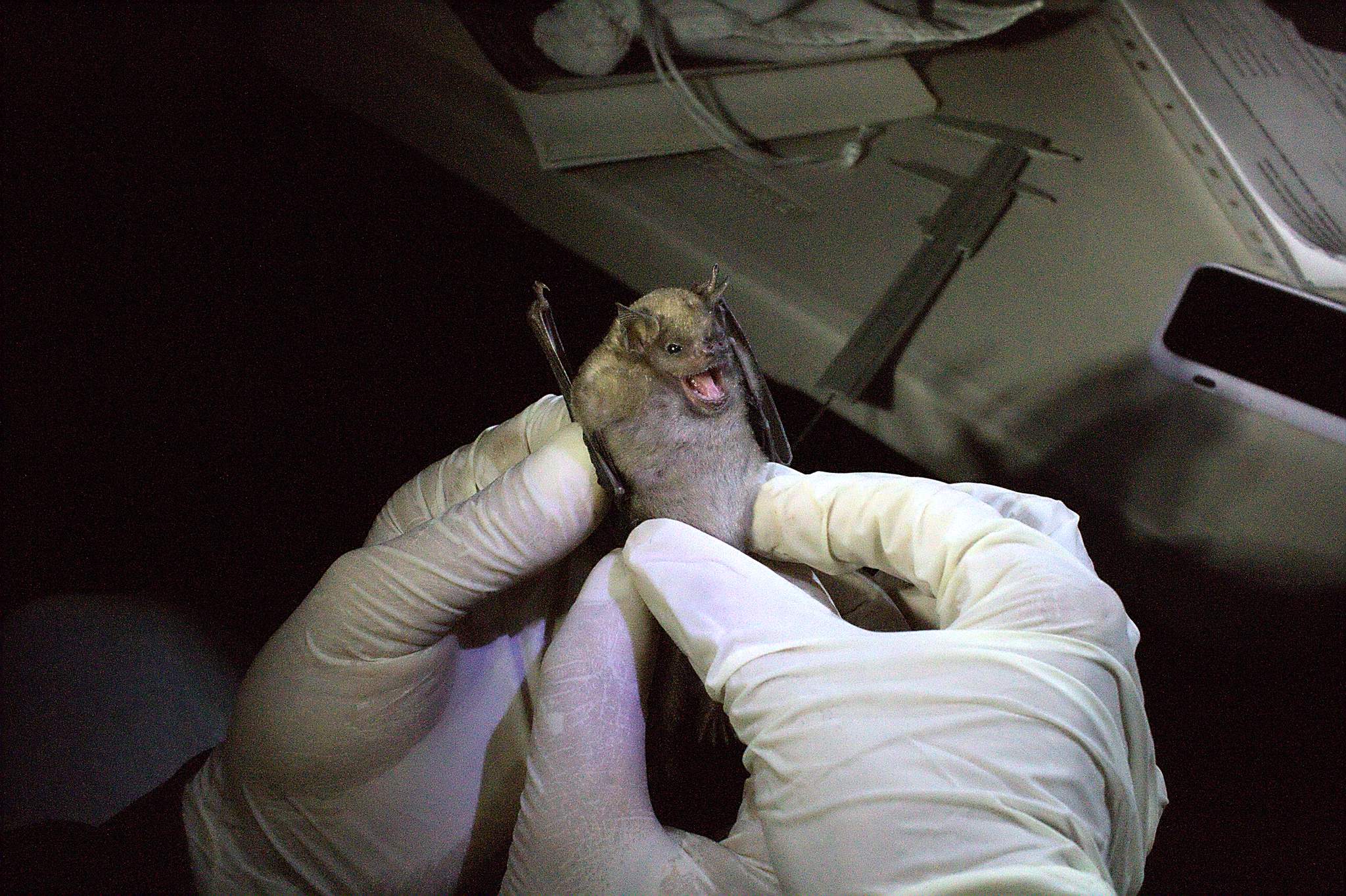The role of bio-surveys in sustainable development
It was 6pm and the cold was felt not only on the skin but also in the environment, as the clouds began to envelop the side of the hill known as “El Cucurucho”, and blocked the landscape that can be viewed from here and that includes Lake Amatitlán and the mountains of the southeast of the central municipality. The last glimmers of light filtered through the foliage, and the sun illuminated with its last strength the cloud forest of Finca El Pilar, in Antigua Guatemala.
There, in that landscape, a group of biologists rested in a clearing a couple of kilometers from the top of El Cucurucho. They had just finished installing the nets they use to catch bats, so they can study them based on established health protocols and safety standards for wildlife management.
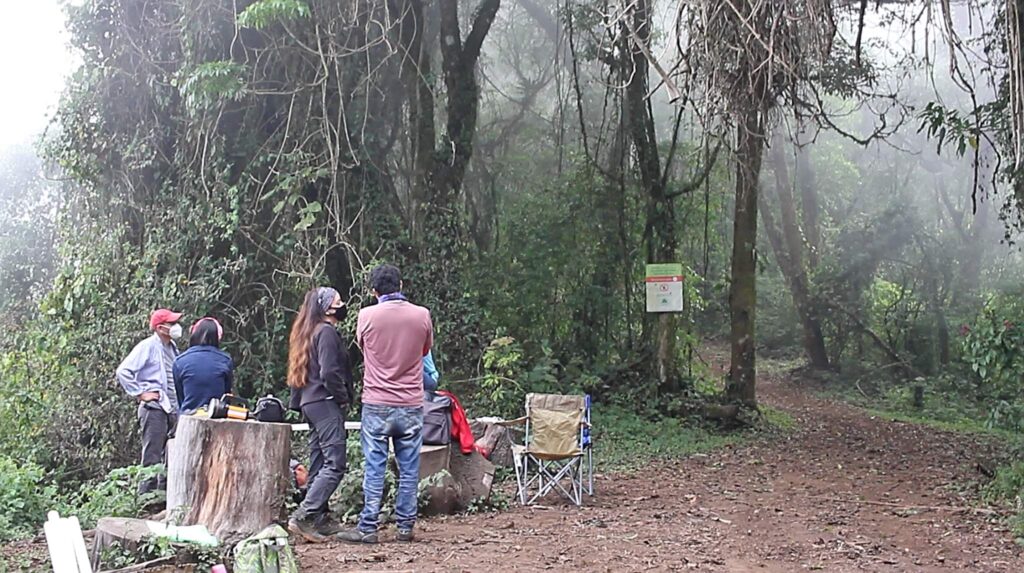
The group of collaborators of the Guatemalan Central Volcanic Chain Project waits for nightfall on El Cucurucho hill, at Finca El Pilar. Photo: Carlos Duarte/Viatori
Most of the scientists gathered here on this occasion are experts specialized in the management and study of Chiroptera, as bats are known for belonging to the order Chiroptera in the class of mammals in the taxonomic scale of fauna. Along with the “bat” experts, there was also a group of students from the Mammalogy course of the Biology career at the University of San Carlos de Guatemala (USAC).
The team of biologists that works to carry out biological monitoring in this place is part of the Project that promotes Sustainable and Resilient Territories in Productive Landscapes of the Central Volcanic Chain of Guatemala. “Its main objective is to incorporate goals for conservation and sustainable management of the land, which can generate global environmental benefits, associated with the landscapes that are in the volcanic chain of Guatemala,” said Manuela Ramírez, coordinator of biological monitoring activities within the project.
The objective of the Project’s Biological Monitoring Program is to generate scientific information on species and ecosystems of the central volcanic chain, and increase knowledge and appreciation of biological diversity in the region. The different biological monitoring activities are carried out in 32 municipalities between San Marcos, in the west of the country, to the Pacaya volcano, located south of Guatemala City, and focus on 3 groups prioritized by the Project: amphibians, mammals and birds, «The biological monitoring programs and biodiversity studies associated with them are carried out mainly in Municipal Regional Parks and are complemented through efforts in Private Nature Reserves», added Ramírez.
The role of biological monitoring
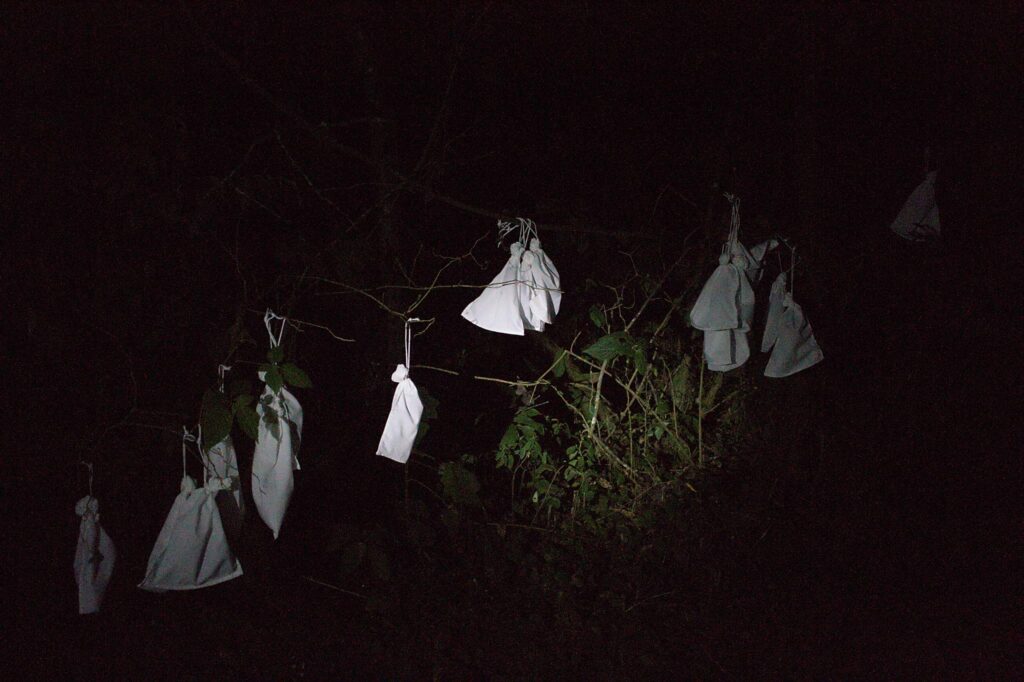
The captured bats were processed, forearm length measurements were taken in millimeters, they were weighed, sexed, their reproductive status determined, their age and identified, and then released. Photo: Carlos Duarte/Viatori
“We came specifically to look for mammals, we are looking for rodents and bats, because we have two prioritized species: the Sturnira hondurensis bat and the Microtus guatemalensis mouse, these are the main objectives of being here today,” explains Ramírez.
In order to study the different species of bats that inhabit Finca El Pilar, it is necessary to capture them to collect a series of key data for their categorization. The nets installed before sunset known as mist nets, extend over the path chosen after an exploration carried out by scientists, where it was possible to establish the presence of trees with fruits that are a source of food for winged mammals.
Half an hour later, when checking the nets, the first screeching sounds emitted by the captured bats were evident. “By working with 3 large groups of wild animals such as mammals, amphibians and birds, we can generate information or have some kind of indication of how it is or what the current state (of conservation) is, not only of the animal populations but of the places where they live, and of the relationship that exists between these communities and the human populations that are around the forests,” said Ramírez.
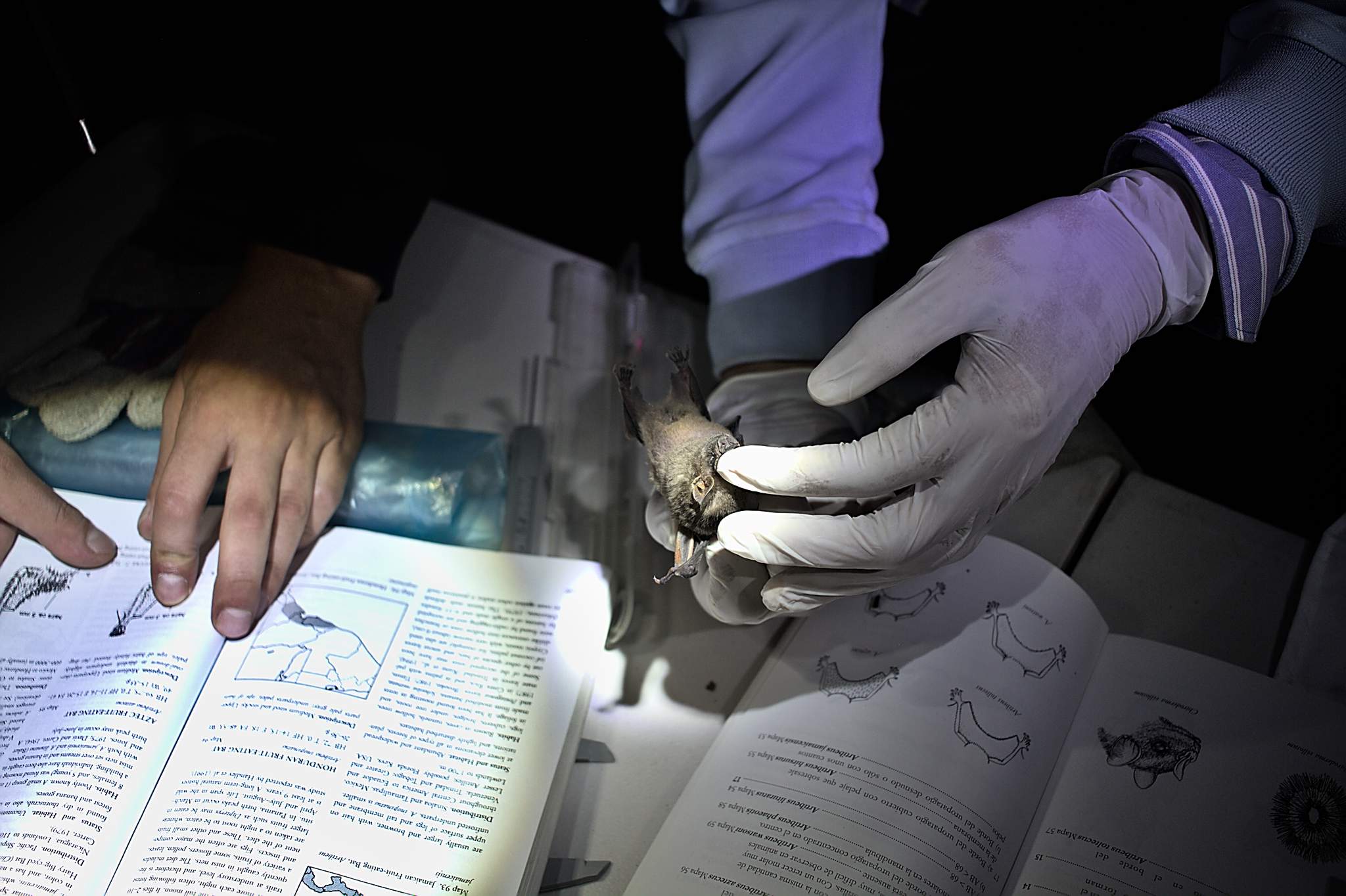
A Sturnira specimen is studied. Bat captures were made after sunset (between 6 and 7 pm), for a period of approximately five hours. Photo: Carlos Duarte/Viatori
The manipulation of specimens (technical term to define the individuals of each animal species captured for study in these activities), must be carried out under a strict safety protocol, both for the captured animals, as well as for the biologists themselves. Special double layer gloves, masks, disinfectant, a table, measuring and weighing instruments, books and field guides to correctly identify the species to which each individual belongs, are the instruments that the group has to study bats .
After an hour, more than 20 specimens had been captured. The preliminary data collected determined that the community of bats in the mountainous area of the El Pilar, a coffee farm and now natural area for recreation in Antigua Guatemala, is very diverse, since several species of bats were identified, such as a species of yellow-shouldered bats (genus Sturnira), Geoffroy’s Tailless Bat (Anoura geoffroyi) and insectivorous bats (Family Vespertilionidae), among others.
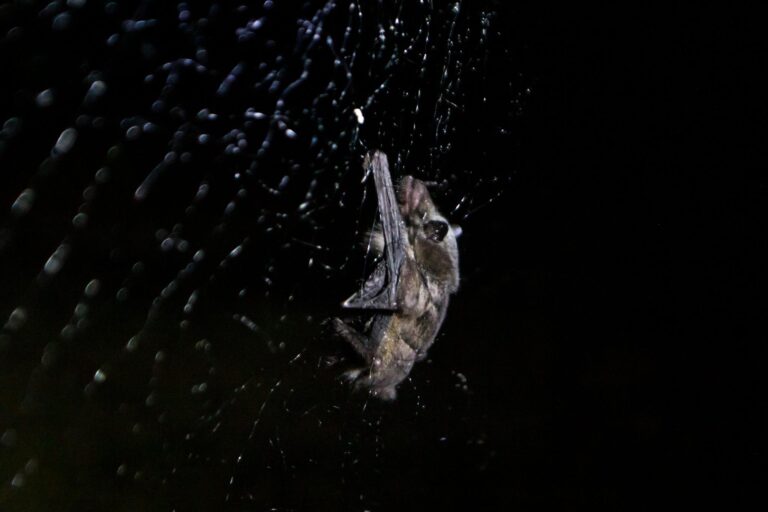
Biologists use mist nets, which are undetectable by bats’ location senses, to capture specimens for study. Photo: Jorge Rodriguez/Viatori
Another important piece of information from this monitoring is that most of the individuals captured were female mothers of lactating age. Monitoring such as these seek to motivate decision makers and the population in general to protect these forest remnants, due to their importance for the biological diversity of Guatemala.
“A biological monitoring as such must be constant, to generate data periodically. It must also be participatory, through the link with the municipalities, the rangers, and with the people of the private reserves, so that they can have the capacities to continue with these processes and that later on there is information that can continue to be of importance for conservation in Guatemala,” Manuela pointed out.
Back to nature
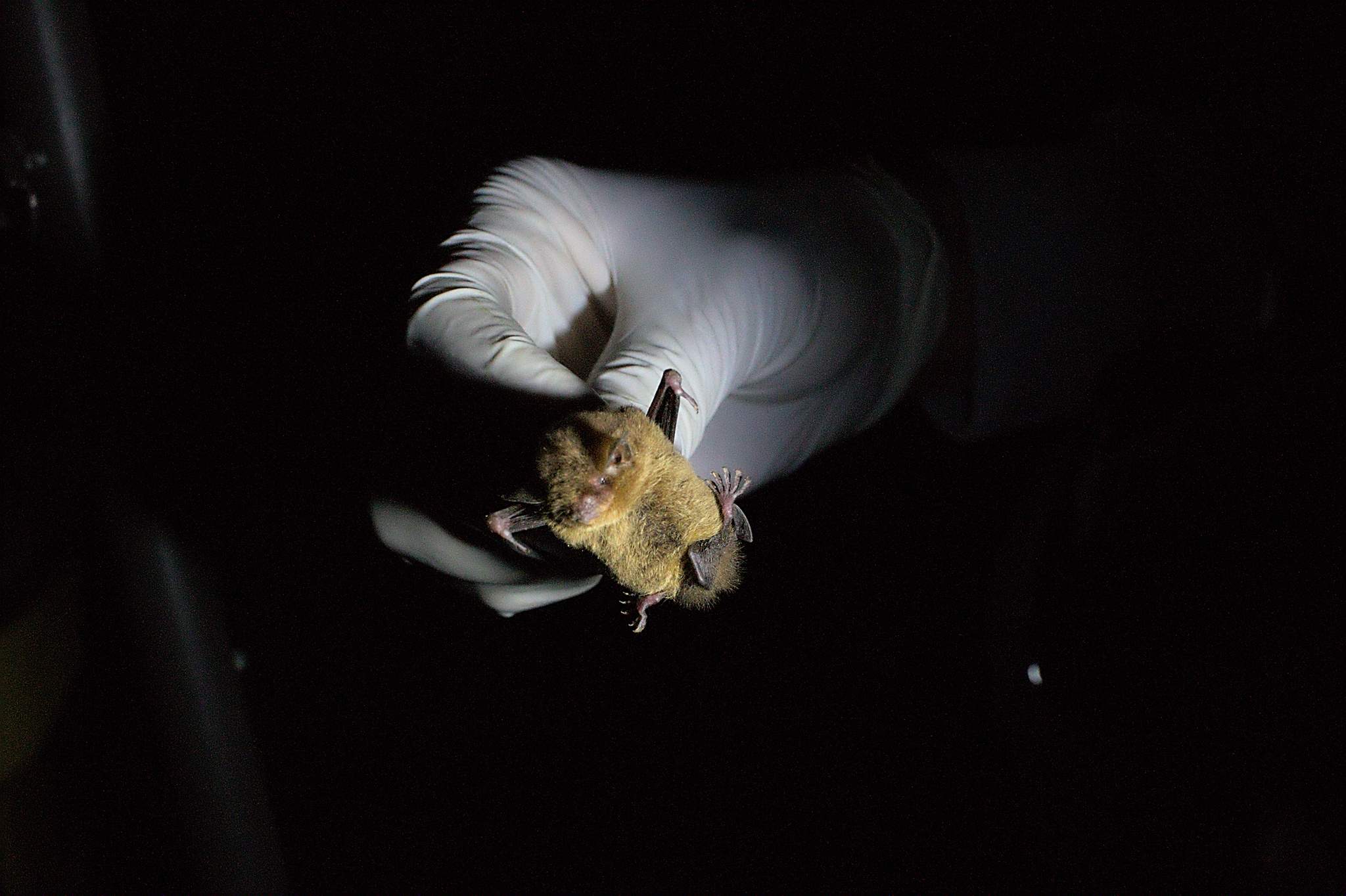
A vespertilionid bat (Vespertilionidae) tries to break free while being studied by a biologist. The size of this species varies between 3 and 10 cm and feeds mainly on insects. Photo: Carlos Duarte/Viatori
After being released from the net, the biologists put each individual inside a special cloth bag to prevent them from harming themselves. From there, each one must wait their turn to be measured, weighed and identified.
But, like almost everything in life, not everything is as easy as it sounds, because none of the trapped bats would go through this process outside their daily routine, without making their annoyance and discontent clear. They complain, yell and bite the biologists throughout the process, which is why they need to wear masks and double protective gloves, to avoid any risk of contracting any disease.
At the end of all measurements and studies, the animals are released to return to their habitat in the middle of the night. Some end up so tired of their fight to free themselves, first from the nets and then from the humans who study them, that they don’t have the strength to take flight instantly, so biologists feed them with syringes containing a sweet water nectar with sugar. After replenishing their strength, they take flight in the thick of the forest and the darkness of the night, to disappear and return to their habitat.
After analyzing the data obtained, the Guatemalan Central Volcanic Chain Project team has preliminary information detailing the capture of 47 individuals belonging to 6 species of bats. This report highlights the capture of 10 specimens of Sturnira hondurensis, the prioritized bat species, which were analyzed in three different altitudinal zones (altitudes) of Finca El Pilar. “With a total effort of 250 traps, eight rodents of two species were captured: one specimen of Heteromys desmarestianus and seven specimens of Peromyscus levipes, but whose taxonomic identity is pending confirmation.
The purpose of collecting data about the Honduran yellow-shouldered bat (Sturnira hondurensis) was to identify the different areas in which it is present, both at an altitude level and at a landscape level within the project Volcanic Chain Has Influence.
According to the results obtained during this monitoring, the Sturnira hondurensis shows a greater presence in higher areas, with a lower level of disturbance than what occurs in areas at lower altitudes.
“Tourism is one of the best tools for conservation”
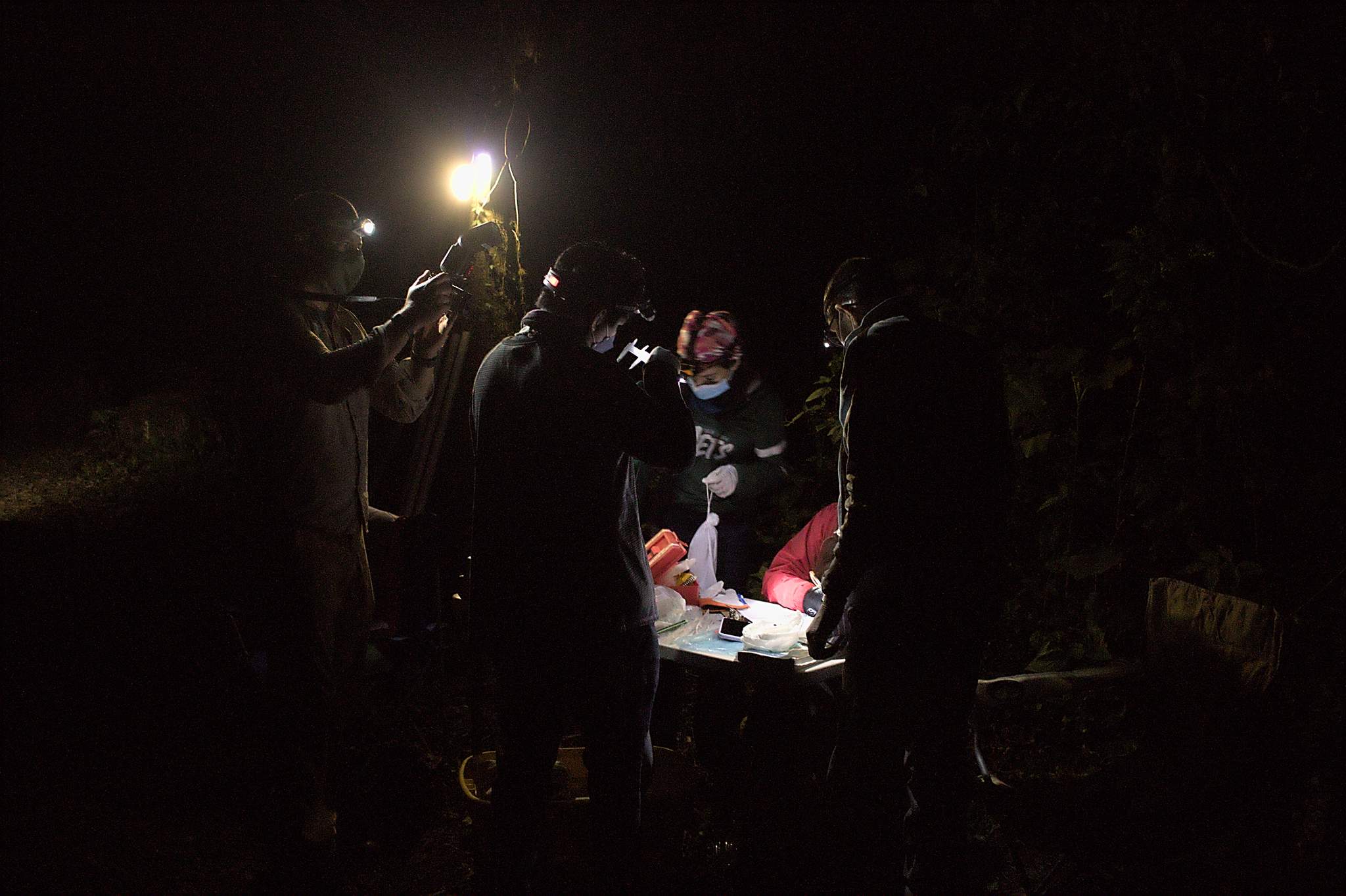
Members of the Project that Promotes Sustainable and Resilient Territories in Productive Landscapes of the Central Volcanic Chain of Guatemala analyze and document bat specimens collected during the biological monitoring. Photo: Carlos Duarte/Viatori
Juan Rivera, nature tourism entrepreneur, co-owner of Finca El Pilar and conservationist, considered that these monitoring activities help to give greater meaning to actions to protect natural areas, while at the same time valuing the importance of creating sustainable activities and friendly to nature, to validate such efforts. He also affirms that tourism can be a good tool for the conservation of natural areas.
In this sense, tourism is presented as a key activity, since it would allow financing efforts such as those carried out in El Pilar, while it would reduce the impact that tourism has on destinations such as Antigua Guatemala and generate a more equitable distribution in other tourist efforts located around the colonial city. “Basically, the profit has been concentrated in the historic center, and the villages have only provided the workforce.” The ideal is that tourism products are always developed in a sustainable way, that they meet the three criteria: environmental, social and obviously economic, that they are profitable”, he points out.
All this also comes to adapt to the demand for a more natural tourism in the open air and that allows contact with nature, which consumers of priority tourist markets for Guatemala, such as the United States and some European countries, request. “It has been seen a lot that people look for parks and open natural spaces to do physical activities, and it is a worldwide trend.” According to the also conservationist, there is also an appreciation of nature, because “in a certain way, there is a sense of guilt on the part of the human being when seeing the destruction that he has made of biodiversity,” he concluded.
*Special thanks to the Project Promoting Sustainable and Resilient Territories in Landscapes of the Central Volcanic Chain in Guatemala and Finca El Pilar for the realization of this story.
